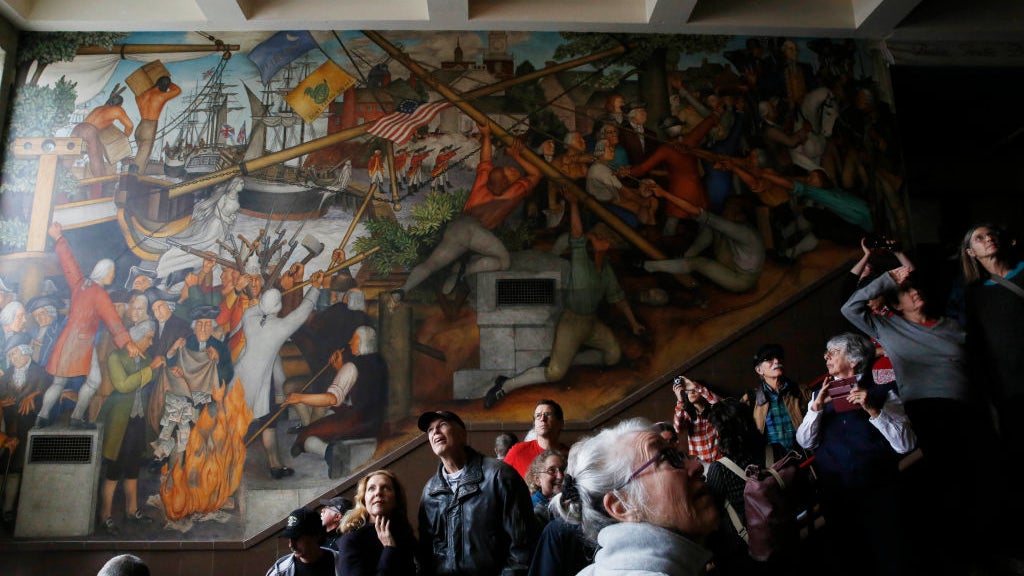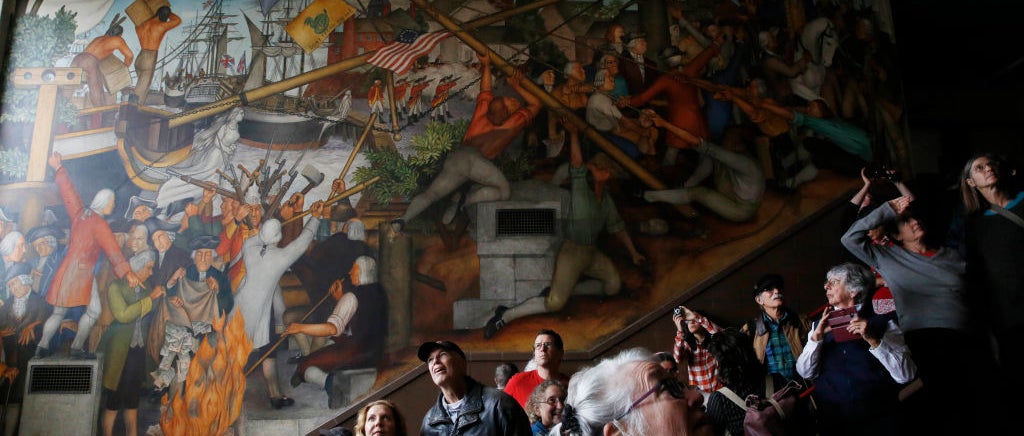A mural created in the 1930s depicting the mistreatment of Native Americans and enslaved Black people has been a sore spot for a California school, leading to an official court ruling on protocols needed before changing or removing the artwork.
A California court this week ruled that the controversial “Life of Washington” murals cannot be removed from a high school without an environmental review, a court has ruled.
The frescoes, paintings done rapidly in watercolor on wet plaster on a wall or ceiling so that the colors penetrate the plaster and become fixed as it dries, were done in the 1930s by Victor Arnautoff, an assistant to Diego Rivera. They depict Black folks who had been enslaved and Native Americans. The mural highlights the mistreatment of these communities.
The school board had decided two years ago to paint over the work, but the George Washington High School Alumni Association sued both the board and the school district over the decision.
There had been ample disagreement over the paintings.
Some feel it is harmful to the students of color that view it, while others, namely art historians, believe that painting over the work would be akin to “burning books,” according to The New York Times.
The murals depict the first president as an enslaver and the U.S., while still a budding country, as responsible for the killing of Native Americans.
The American Indian Parent Advisory Council were among the organizations at the school that pushed back against keeping the artwork in the school for the sake of the students.
“When I as an Indigenous Pacific Islander look at the mural, I am hurt and offended,” said Faauuga Moliga, vice president of the San Francisco Board of Education, according to The New York Times.
“I am certain most people of color who have viewed the mural at Washington feel the same as me.”
Ultimately, a Superior Court of California judge ruled that San Francisco officials must comply with the California Environmental Quality Act. Because this act was “enacted to protect California’s environmental and historical resources,” this means that the artwork cannot be removed before an environmental impact review is conducted, according to The Times.







